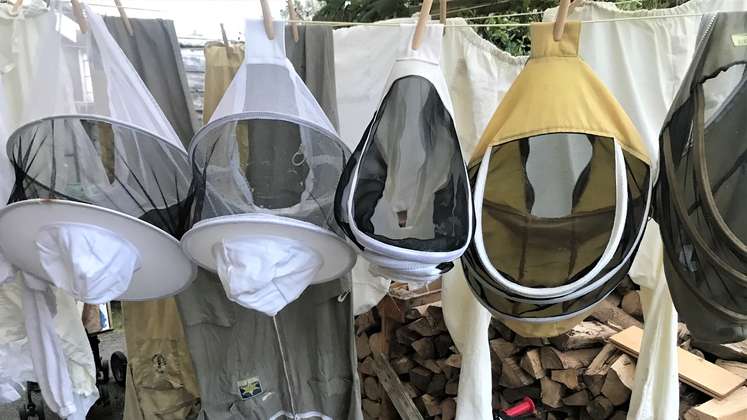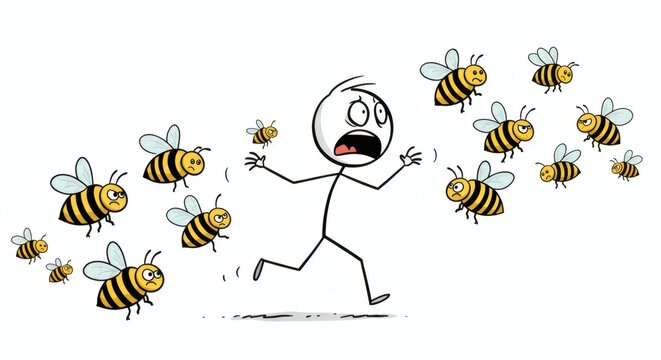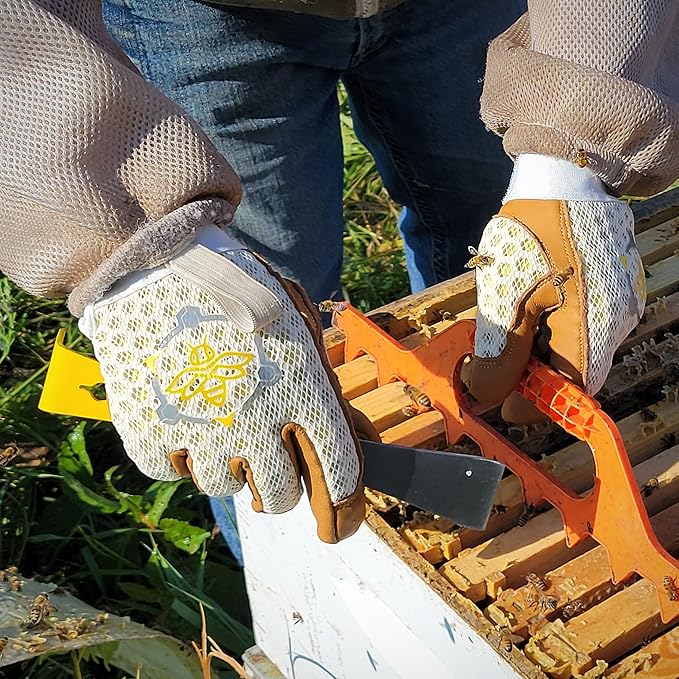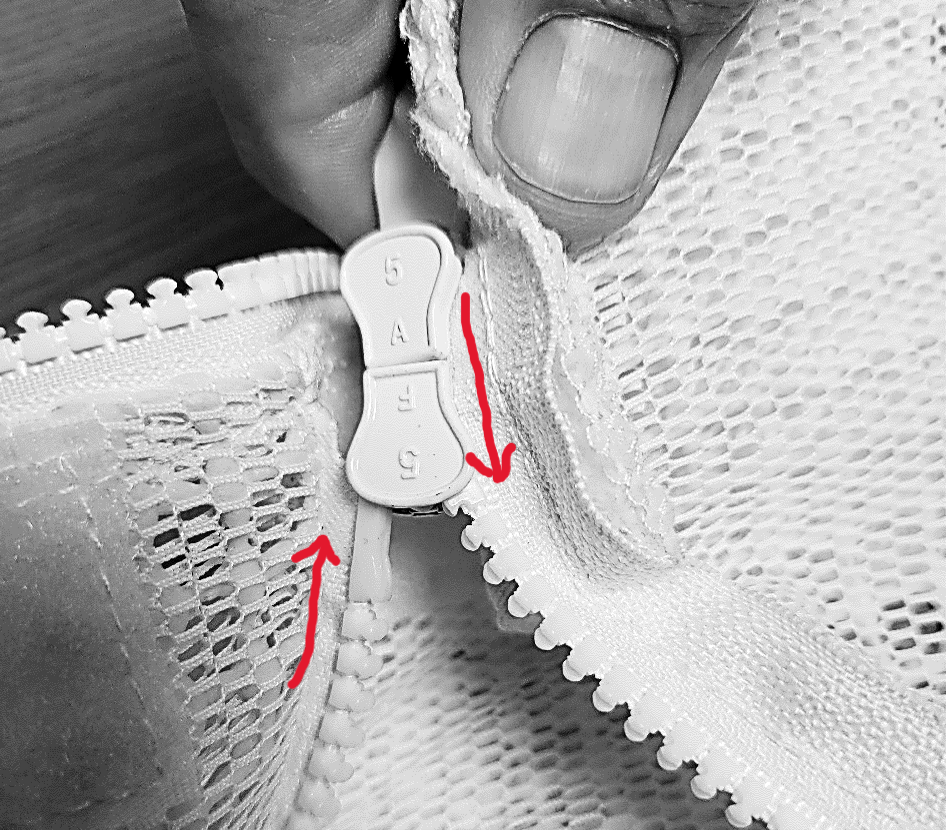Ensuring Longevity and Effectiveness of Your Gloves and Suits
Beekeeping gear, especially gloves and suits, are essential for ensuring your safety and
comfort while managing your hives. How well they fit, how comfortable they are, and
how well they allow you to perform are some of the primary factors that affect the
amount of enjoyment that beekeeping brings. That’s why it’s not only important to
choose high-quality gear, it’s also important to take care of your investment.
Proper care and maintenance of these items will not only prolong their lifespan but also
optimize their contribution to your positive beekeeping experience. Here are some
guidelines on how to care for your beekeeping gear.
Cleaning Your Beekeeping Suit
Regular Cleaning
-
Beekeeping suits are often exposed to smoke, propolis, honey, and other substances
during hive inspections. Regular cleaning is crucial to prevent the build-up of
contaminants and odors. Follow these steps for cleaning your suit: - Pre-treatment: Before washing, inspect your suit for any stains and pre-treat
them with a mild stain remover or just some laundry detergent. Propolis can be
particularly stubborn, so gently scrub the affected areas with a soft brush and
mild detergent. - Washing: Wash your suit in cold water using a mild detergent. Avoid using bleach
or fabric softeners, as they can degrade the fabric and reduce its protective
qualities. - Remember, bees are sensitive to smells, so choose detergents that are
unscented or very lightly scented. - Drying: Air-dry your suit to prevent shrinkage and maintain its integrity. Do not
use a tumble dryer, as the high heat can damage the material.
Deep Cleaning
Occasionally, your suit will require a deep cleaning to remove accumulated grime and
ensure it remains hygienic. Follow these steps:
- Soaking: Soak your suit in a solution of warm water and mild detergent for
several hours. - Scrubbing: Use a soft brush to scrub areas with heavy stains or build-up.
- Rinsing: Rinse thoroughly to remove all soap residue.
Maintaining Your Beekeeping Gloves
Regular Cleaning
Gloves are prone to getting sticky with honey and propolis and can harbor bacteria if not
cleaned regularly. I posted a more detailed blog on this subject last month, but here’s a
re-cap on how to keep beekeeping gloves clean:
After each trip to the apiary, just wash your hands with soap and water, …but
leave your gloves on. Dry them with a towel. This will go a long way toward
keeping your gloves from getting that thick layer of built up propolis and dirt.
Deep Cleaning
Periodically, gloves need a deep clean to ensure all residues are removed. Here are
some ideas that beekeepers use to get their gloves clean:
- Soaking: Soak your gloves in warm water mixed with mild detergent.
- Scrubbing: Use a soft brush to scrub stubborn stains.
- You can always use my favorite method as outlined in my previous blog post
about cleaning beekeeping gloves. Basically, you machine-wash your gloves
with some other laundry. I’ve found that this method works very well when the
gloves have become too soiled for the basic/regular cleaning method noted
above.
Remember, the key is to wash the gloves in with other laundry. I’ve had good
luck machine-drying as well. Again, as long as it’s done along with plenty of
other laundry, it should work well.
Conditioning Your Beekeeping Gloves
Nourishing the leather
This conditioning step likely has the most positive effect on adding to your beekeeping
gloves’ lifespan. Whenever the leather (goatskin, cowhide, etc) gets wet, whether its
from sweat, water, or whatever and then dries, the leather degrades a little. Over time
the natural oils get dissolved and leached out, washed away, or just diminish over time.
This results in the leather becoming hard, stiff, and easily cracked.
Replacing those natural oils and keeping the leather soft and flexible will allow it to
resist cracking and breaking down internally. Further, a good protective conditioner will
form a protective barrier on the surface that will make the leather more resistant to dirt
and less permeable to water and other solvents.
Here are some tips on using leather conditioner:
- First, choose a good leather conditioner. Liquid or really soft gel products are
much less likely to be good at protecting and most of them actually cause the
leather to dry out faster over time. Most oil-based products are actually not that
great at conditioning beekeeping gloves. It’s best to use a stiff paste-type leather
conditioner like our Apis Tactical Leather Conditioner which is formulated
specifically for beekeeping. - The best time to apply a leather conditioner is right after the gloves have been
cleaned and dried. If you use the method I recommend, you can apply the
conditioner when the gloves are still warm from the dryer and the leather will just
“drink” in the conditioner while the pores are open. - With good quality stiff, paste-type leather conditioners, you will get better results
if you use a little heat. You can warm the conditioner using a regular hair dryer.
This will temporarily liquify the paste and allow it to soak into the leather better. I
even use the hair dryer to warm the surface of the leather first to facilitate this
process further. Sometimes I’ll smear the paste on and then run a hair dryer over
the surfaces to “melt” in the conditioner. Try it and you will see the difference! - Work the leather conditioner paste into the leather, putting on as much as
possible. Let it sit overnight, then rub again with a dry, clean cloth to remove the
excess.
You’ll notice that with regular care using a quality leather conditioner, your gloves will
not only last longer, they will perform much better the whole time.
Storage Tips
Proper storage is key to maintaining the quality of your beekeeping gear:
- Drying: Make sure your gear is completely dry before storing to prevent mold and
mildew. - Location: Store your gear in a cool, dry place. Avoid areas with direct sunlight or
high humidity. - Protection: If you must store your gear in something, use breathable containers
or bags to store your suits and gloves, allowing air circulation and preventing any
unpleasant odors. - In some parts of the country (yes, you Florida), beekeeping suits can get moldy
even while hanging to dry. One trick that may help is to use a fan to keep the air
moving across the suits. Mold doesn’t grow well in moving air, so, even if you
can’t control the humidity, moving air will help a lot.
Repair and Replacement
Maintaining your gear also involves timely repairs and knowing when to replace items:
- Inspection: Regularly inspect your gloves and suits for signs of wear and tear,
such as holes, frayed edges, or weakened fabric. That small tear is still going to
be there inviting bees inside, …even (and especially) if you don’t know about it.
So remember to take a moment to look over your suits, jackets, veils, hoods, etc
to be sure everything is in tact after each use. - Repair: Small holes or tears can often be repaired with needle and thread or
special fabric patches. Our Apis Tactical Beekeeping Repair Kit has everything
you might need to repair several types of beekeeping gear. - Replacement: If your gear shows significant damage or wear that compromises
its protective qualities, it’s time to replace it. Yes, I know how difficult it is to part
with your favorite suit or gloves, but even the best beekeeping gear has a finite
lifespan. When it’s time, …it’s time.
Additional Tips
To further ensure the longevity and effectiveness of your beekeeping gear:
- Use with care: Handle your gear gently, avoiding rough treatment that can cause
damage. - Rotate gear: If possible, have multiple sets of gear and rotate their use to reduce
wear and tear on individual items. - Stay informed: Keep up-to-date with new products and maintenance techniques
that can help preserve your gear.
By following these guidelines, you can ensure that your beekeeping gloves and suits
remain in optimal condition, providing the protection you need while working with your
bees. Remember that well-maintained gear not only enhances your comfort and safety
but also contributes to a more enjoyable beekeeping experience.




